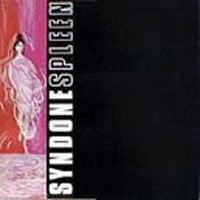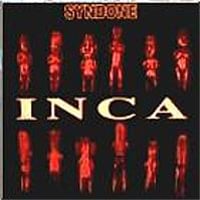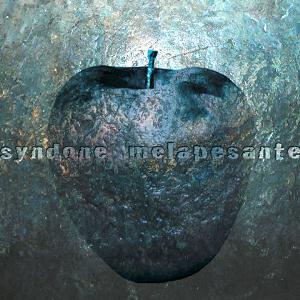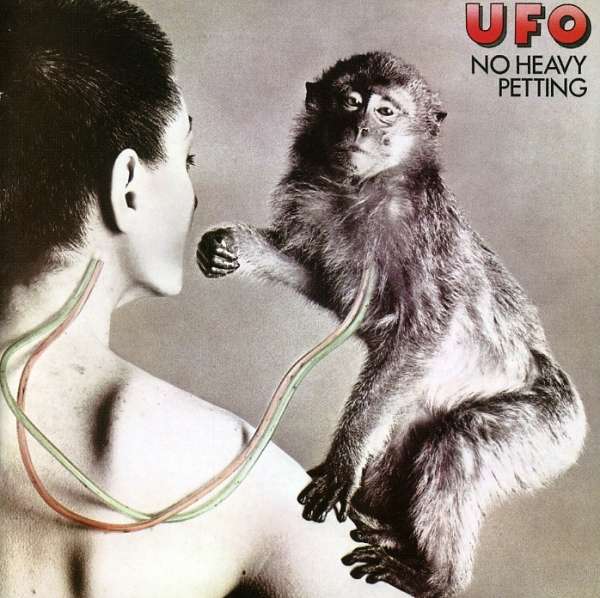Progarchives.com has always (since 2002) relied on banners ads to cover web hosting fees and all.
Please consider supporting us by giving monthly PayPal donations and help keep PA fast-loading and ad-free forever.
/PAlogo_v2.gif) |
|
Post Reply 
|
| Author | |
toroddfuglesteg 
Forum Senior Member 

Retired Joined: March 04 2008 Location: Retirement Home Status: Offline Points: 3658 |
 Topic: Syndone Topic: SyndonePosted: February 12 2011 at 07:38 |
|
Italian band Syndone is Nik Comoglio's one time project. Nico (Nik) Comoglio was born in Turin on 28/11/62. He was graduated as architect but at the same time privately studied piano and composition. Still in University he created several jingles for ads and soundtracks for two semi-professional movies. From 1990 to 1993, he formed the new prog band, "Syndone" ("Shroud"), with whom he recorded two CD's: "Spleen" and "Inca", produced by Beppe Crovella from "Arti & Mestieri" band, for the music label Vinyl Magic s.a.s. in Milano. Two other members were Paolo Sburlati- drums, and Fulvio Serra- bass. Three albums has so far been the result. Syndone has just released their new album Melapesante and I got in touch with Nik for the Syndone story. ###########################################################
Your
biography has been covered in your ProgArchives profile so let's
bypass the biography details. But which bands were you influenced by
and why did you choose that name ?
Most of all “Genesis”,
“ELP”, “Kim Crimson”, “Gentle Giant” and “The Nice”
partly. We
wanted a name that would evoke all together “Sacredness”,
“Turin,” “Spirituality” and “Scored Grooves” (like an old
vinyl LP) so I thought of SYNDONE, with the “Y” to differentiate
it from the famous relic and make it international at the same time,
without being blasphemous. This name in fact immediately evokes Turin
in any part of the world … and I liked this!
How
was the music scene in your area when you started up ?
In
late 80’s there was no talk of new-progressive
yet, although you
could feel everywhere a clear ferment
of a return to this style by the artists. In Italy, my country,
everything was “static”, with plastered mass-produced forms of
blank songs without any ideas at their bottom. So I decided to put
together an “ELP” style trio, with Paolo Sburlati on drums and
Fulvio Serra on bass, and to develop my new ideas in a very power
way, as a kind of “ideological provocation.”
 That
brings us to your debut album. Please tell us more about Spleen from
1992
"Spleen"
(an
homage to Baudelaire's Les
Fleurs du Mal)
was a still "immature" work, with too many pop-jazz
influences inside, but it was a real challenge for me! I wanted to
experiment with all the new 90’s sample keyboards, enjoying myself
to test every sounds library being in the studio. We thought we were
creating an interesting sound for the album but, truly, it was not so
original…the temptation to play with all those kbds presets "fake
but true" was big as well as it was a big mistake.  Please
also tell us more about your second album Inca from 1993
“Inca”
sounded immediately much better just from the beginning; it was much
rough than “Spleen” but more progressive and very next to this
genre. We use only vintage instruments (even drums, bass, amplifiers
and effects) and every track of the album was recorded absolutely
live with few overdubbing. The pieces were arranged to be performed
live by a trio band. Press treated it very well.
Beppe
Crovella produced both albums. How did you get in touch with him and
how was the cooperation with him ?
The
experience with Beppe Crovella dates back
to the end of 1989 when we met in his studio. I had several pieces of
progressive music to show him, and from this collaboration came the
two albums. I have to say that working with Beppe was always a good
feeling because, being a musician himself in addition to a producer,
he was very open to expressiveness, art, music and to the musicality
of the tunes, often giving us artistic advices during the recording
sessions. So the albums took off!
And
then there was a long silence from you. What were you up to during
these years ?
I
began to
evolve in
classical music,
studying composition with Maestro Azio Corghi, whom I’m just now
collaborating with, learning to write for
orchestra, solo
reed/brass instruments, small string chamber
ensemble and opera singers; this
allowed me to
discover new exciting
horizons, especially
in a way of
harmony and orchestration. I
also worked as a
composer of advertising jingle spots for some
italian commercial networks, film soundtracks
and TV documentaries. I’ve
recently composed music
for ballet,
opera/musical and oratorios… that’s my lovely theatre experience!
My solo albums are: “Il Sogno di Itaca” (2003), “Anima
di Legno” (2006), “Acqueforti”(2009). See
also www.nikcomoglio.it
for details.  Melapesante
from last year is your comeback album. Please tell us more about the
creation of the songs for this album and the album itself.
The
idea of making a concept album over the
apple symbolism was very exciting!
…“Following
the thread of images of the apple in western culture, writing the
lyrics for the songs on the album, so many little elements in our
world, in the development of our civilization, struck me”: from
Newton’s scientific discoveries to Magritte’s paintings.” And
within the history of humanity, from the Greeks until today, the
apple has always been a symbol that, especially until the beginning
of the 1900’s with the coming of psychoanalysis and the new
sciences, represented something negative, connected with sin, desire,
and the unknown. We owe this judgment to our traditions and religious
culture”… [Ricky].
With
this album and through the texts, we
attempt, on the other hand, not to give a judgment on what the apple
represents … whether this is a turning point, a point of change or
a movement, perhaps not controlled, toward our own freedom or toward
a decline, we do not wish to align ourselves one way or another,
because this would make no sense. All we want to do, and that we hope
will happen is that this symbol will become “smoothly heavy” for
progressive music.
To
whom it may concern, these are the basic ideas of the lyrics of
Melapesante: Track 1
OPHELIA’S
MELANCHOLY
Saturn,
the seventh heaven of Dante’s system, was considered by the
ancients to correspond to lead, one of the heaviest metals; it is
also known as “the melancholy planet.”
From
these similarities and assonances in this track, Ophelia (understood
as a Shakespearian character) is hypothesized traveling after her
death toward this heaven.
This is
the passage into a new life taking with her a constant
disappointment with earthly tensions. Thus “Melancholia” becomes
the primary feeling, rescue and destiny.
Over
the centuries, the image of drowned Ophelia became the true archetype
of feminine folly, always connected in some way to sexuality or to
disappointed love. It represents, like the Apple, someone who cannot
disregard her own femininity and cannot be separated from her
sexuality.
Track 3
MELAPESANTE
Melapesante
is an idea, an opinion that hits you, the choice that upsets the
balance, a center of attraction.
Symbols
travel in time and every time they re-emerge, they indicate a change.
Images
and the concepts expressed by them go straight to the heart and it is
impossible not to avoid the weight.
In a
voyage through mythology, from the Garden of Eden (the Serpent) to
Logica (the Devil), the Apple appears to contradict dogmas, to reveal
truths, to represent carnal desire as the fulfillment of the senses
and conquest of the centrality of the being.
This
indicates the escape route toward freedom from the oppression of
religion and the battle against ignorance and superstition.
This is
why the initiates have bitten the fruit of knowledge and freedom;
none of us is excluded from this game!
Track 4
MAGRITTE
The
image is that of works such as "Le
fils de l’homme" and "La
chambre d' écoute" by
Magritte.
The track
is intended in homage to the message of the Belgian painter, using
symbols such as “the apple,” “the man with the hat" and
“the sea.”
Reality
is shown, but perhaps it is not what is seen; the mystery and the
acceptance of the undefined is the only way that humans have to face
reality, to perceive the "silence of the world.”
Track 5
GARDENS OF THE
HESPERIDES
A leap
into Greek mythology, in the Garden of the Hesperides, the
protectors, along with the dragon Ladone, of the tree of golden
apples (pomi).
The point
of view is that of an Argonaut who, arriving in the Garden the day
following the theft of the apple and the killing of the dragon, sees
the nymphs change into trees and the birth of a new constellation in
the sky, that of the Serpent.
The
willow is the tree-nymph on which he will rest.
The myth
represents the existence of a kind of paradise, object of human
desire, and of a hope of immortality (the golden apple).
Track 6
MALO IN ADVERSITY
Track
dedicated to catastrophe of the World Trade Center [09/112001 NYC].
Malo/um
means “Mela (Apple)” but also “Mal”: the evil of one who has
done what was done and those who have allowed it to be done.
Images of
that day won’t go away. The memory of the news, the videos, and the
anger still revives visions and reflections on the hope of a new age.
Slowly,
leaves of burned paper with farewell messages, falls like black snow
on the Grande Mela
Track 7
THINKING APPLE
Thoughts
cut from a fruit.
An apple
is hanging from a tree, it looks around, it detaches itself, and
catches sight of Newton sitting just below it.
Undecided
whether to fall on his head, conscious of the weight of its gesture,
it reviews known and unknown details of the life of the great English
scientist.
Track 8
WILLIAM TELL’S APPLE
In
Japanese traditions associated with archery, the arrow is the symbol
of love. Its phallic shape is obvious: it penetrates into the center
like the male principle and introduces itself into the feminine
element (the apple, of course).
The two
hundred steps are those that separated William Tell’s arrow from
his son’s head.
Tell is
virtue and Gessler, his rival and slave to a power he cannot
refuse, will fall in their miserable death with the background of a
people exultant with their conquest of freedom.
Track 9
WITHIN THE
UNCONSCIOUS
(Comoglio)
The apple, because of its spherical shape, represents terrestrial
desires and their fulfillment. Yahweh’s prohibition warned man
against the dominion of these desires that drag him toward a
materialistic life if regression at the expense of his spiritual
development. This divine warning makes the man aware of the two
directions inviting him to choose. But the choice is not always
between two roads to take; often it is between two parts ones own
being that are constantly in conflict between each other and only one
of which, in the end, is predominant. The unconscious is the door
through which the part of the dominated character wishes to make
contact with the “I” to prevail; or, sometimes, it is our
conscious side that wishes to hide in the unconscious to escape
reality.
Melapesante
is a mature album, showing artistic
maturity in writing and care with sound.
That
being said, this album does make reference
to clichés from the Syndone of the 1990s; we didn’t want to
entirely give up that particular sound that we created then; for
example: here too we leave out the electric guitar but we introduced
other timbres with the use of the vibraphone or different types of
keyboards.
We
also have to remember that in these
eighteen years since “Inca,” technology has made great strides
from the point of view of recapturing sound, even improving the sound
itself; the new microphones used have made recording vintage
keyboards, voices, and acoustic instruments much clearer and deeper,
and this important aspect of innovation must not be underestimated.
In any case
we had to also consider another fact, the natural comparison with the
other two albums, which were successful in their own way.
We
needed to take a step forward both
artistically and technologically to begin at a level, if not higher,
at least on an equal footing compared to the two other productions,
to then rise to an optimal position, better than the one we left
behind.
What
inspires you to create new music and what is your recording technics
?
Inspiration?
It’s hard to talk about inspiration; I
really don’t know when inspiration comes to me! Anyway…
generally, with prog. music, I start to work on a new riff or on a
new melodic line that sounds me weird; at this time I use only my
acoustic piano (and nothing else) to jot down on paper the first
harmonic and rhythmic structure of the song. Then I go to the
computer to write the main orchestration, the “obbligato” parts,
the “tempo” indications, making a midi sample simulation file.
Then I e-mail the score to the band with the music file. Next step I
join the band to rehearse the whole thing live, trying arrangements,
solos, drums rhythms, incipit and finals. For “Melapesante” we’ve
recorded by this way: 1) Drums and bass over the midi file – 2) All
the hammonds and acoustic pianos and Rhodes – 3) Vibe, percussions,
cellos and strings, brass – 4) All keyboards – 5) Main solos –
6) Lead Vocal – 7) Other solos and guests featuring – 8) Backing
vocals – 9) Samples, taurus basses and effects – 10) Mix down –
11) Mastering
Just
to give those of us who are unknown with your music a bit of a
reference point or two: How would you describe your music ?
Generally
my music is strongly rooted in a classical
background by now; I think this is the point of the matter! Even when
I get back to write progressive music (as on Melapesante project) my
heart still feels itself in a rocker way but my brain feels itself in
a classical way. I could define it “crossover music.”… but I
don’t know if it’s correct!
What
is your plans for the rest of this year and beyond ?
To
promote this album as well as we can, through
press reviews, interviews, live concerts, radios and televisions….
and the meantime we’d try to jot down new music for the next album.
To
wrap up this interview, is there anything you want to add to this
interview ?
I
keep coming back
to
prog.
with
curiosity,
enthusiasm
and
creative energy
renewed,
and
I
return
after
many
years of
different musical
experiences that
I
have
definitely
matured
in
many
ways.
I think
this
new
album
will be
something
very
innovative and
weird, because it
will combine
the
variety
and
the artistic
expressions
that
characterize
our
musical
experiences.
Above
all it is
the result
of a
common desire
to
create
always
good music.
Nik
Comoglio
(by courtesy of Syndone
prog. Band) Thank you to Nik for this interview |
|
 |
|
Andrea Cortese 
Special Collaborator 

Honorary Collaborator Joined: September 05 2005 Status: Offline Points: 4411 |
 Posted: February 16 2011 at 16:04 Posted: February 16 2011 at 16:04 |
|
Excellent interview and intriguing concept!! BRAVI!!!!!!!!!!!

|
|
 |
|
Post Reply 
|
|
| Forum Jump | Forum Permissions  You cannot post new topics in this forum You cannot reply to topics in this forum You cannot delete your posts in this forum You cannot edit your posts in this forum You cannot create polls in this forum You cannot vote in polls in this forum |